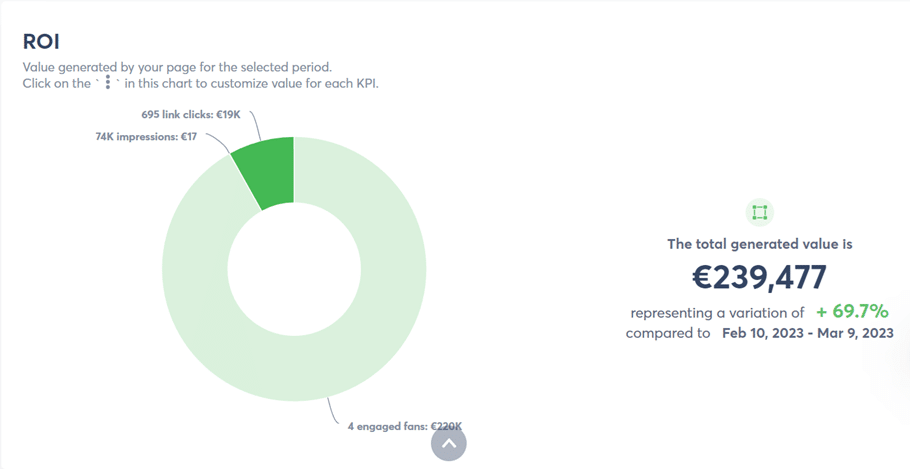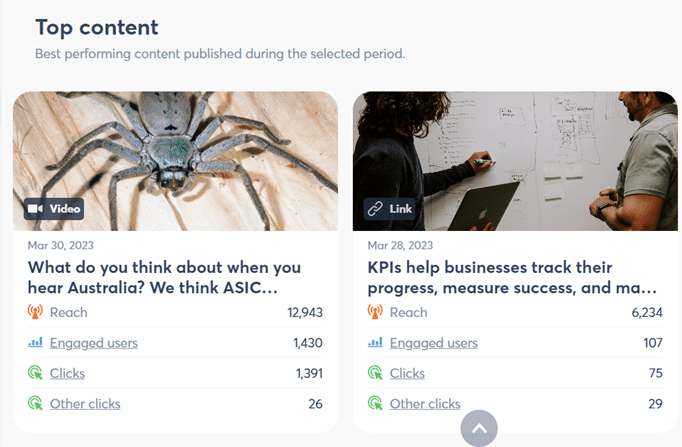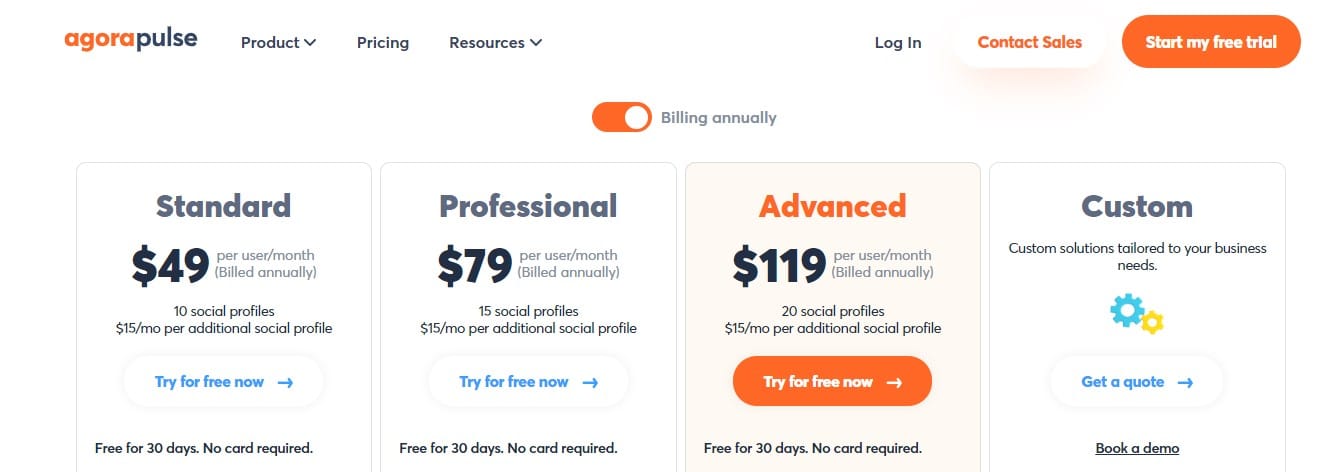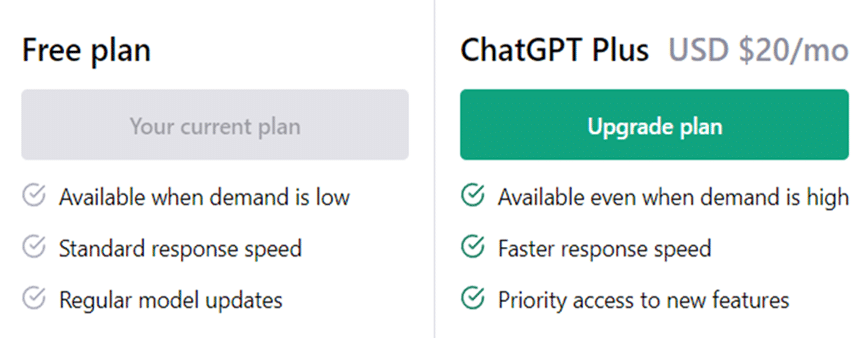With tightening social media marketing budgets, a higher social media marketing cost, and the rapid onset of ChatGPT and AI, the Year 2023 has been tough for social media teams so far.
Let’s address some key social media challenges and put out some fires.
If you want a deeper look into each one, watch our free Social Media Survival Guide webinar with Darryl Praill, CMO at Agorapulse; Mike Kaput, Chief Content Officer at Marketing AI Institute; and Christopher Penn, Co-Founder and Chief Data Scientist at TrustInsights.Ai.
You’ll get the details and learn how to:
- Identify the right marketing channels and content to increase your reach
- Put AI to work so you can be more efficient and effective
- Leverage social media to maximize sales, leads, and website traffic
- Use data to adjust campaigns in real-time to maximize results
Let’s take a closer look at some of the challenges facing social media teams right now and how we can resolve them.
1. Stakeholders Demanding Data-Driven ROI Insights
With social media marketing budgets tightening, the social media marketing cost rising, competition heating up, and stakeholders getting restless, social media ROI is a 2023 buzzword.
Social Media ROI is the cold, hard data you use to prove to stakeholders that all the resources and social media marketing costs used by your social media team are justified.
Think dollar-centric social media KPIs like:
- Conversion rates
- Leads generated
- ROI
Social media teams are largely comprised of creatives. And rightly so. They are the writers, designers, and videographers who create scroll-stopping content.
But stakeholders are looking at the overall marketing ROI. And the most basic way to calculate social media ROI is to take the sales growth from your brand or product line, subtract the marketing costs, and then divide by the marketing cost.
If you’re not delivering, then they might be looking to make budget cuts.
Marketers should aim for a return on investment (ROI) of at least 3:1 for social media advertising. So, for every dollar spent on advertising, the brand should earn three dollars in revenue.
Related: How to Prove Social Media ROI With Stone-Cold Data
Social media survival action plan
Using smart social media marketing tools means you can focus on being a creative and still prove the ROI of your activities. Pulling accurate reporting metrics is key to getting a good picture of your ROI.
Use the Agorapulse ROI calculator to prove the value generated from your social media activities.
Simply input your values and date range and the calculator will do the rest! Be sure to connect your ad accounts and Google Analytics to your Agorapulse panel for the most accurate ROI results.
Incorporate ROI into your monthly social media reports which can be delivered automatically to key stakeholders.
Related: Best Tools for Creating Revenue Dashboards
Social media reporting is nectar to overworked stakeholders because it:
- Demonstrates ROI through clear visuals
- Establishes trust by proving your work
- Benchmarks key stats like account growth
- Shows a comprehensive overview of all the channels
- Illustrates growth and reduction in key marketing areas
2. Budgets Are Being Slashed, and Layoffs Are Happening
Impending recession fears have taken their toll on social media marketing budgets and upcoming spend.
74% of advertisers said the economic downturn is influencing their 2023 budget decisions. And most marketers surveyed said their budgets and social media marketing costs are under heavy scrutiny.
The IPA Bellwether report shows marketers are feeling increasingly pessimistic about the future fortunes of their companies and industries, with budget cuts beginning to roll in.
“Maintaining or increasing marketing spend is the ideal response to a crisis,” says IPA director general Paul Bainsfair, citing IPA research which found the UK’s 50 “strongest” brands delivered shareholder returns that were 30% higher than the FTSE 100 in 2021. But he accepts that keeping or increasing marketing budgets in the current climate is “not necessarily the easiest thing to do.”
Social media survival action plan
It’s good to be proactive about social media marketing budgets with your clients and stakeholders. It’s likely they are thinking about it even if they haven’t voiced concerns yet.
Here are some actions that social media managers can take to help lower social media marketing cost:
- Ascertain low return channels and activities. Are you pumping advertising money into a channel that isn’t producing results? You can still post organically and simply reduce or remove ad spend. Generate an Agorapulse power report to see exactly how your channels are performing and make data-driven decisions.
- Focus resources on revenue generators. Pulling social media marketing budgets away from a nonperforming channel can free you up to invest in a high-performance one. But consider what “high performance” means within the budget discussion. For social media managers, it probably means high engagement. For stakeholders, it likely means $ ROI. So, reduce vanity boosts, and instead focus your ad spend on driving traffic to shopping and sign-up pages.
- Reduce unnecessary expenses. Without wishing to sound like the old lady in the movie “Titanic,” I do remember when social media budgets were a bottomless pit. Circa 2013, I was pumping budget into everything, trying the latest tools and advertising everywhere. And for the most part, it paid off. Competition was lower, engagement algorithms were kinder, and social media was still quite new and exciting. But fast forward 10 years, the landscape has changed, and budgets are leaner. So, we need to remove unnecessary expenses. Your internal employees and agency support should be the last to go. Instead, run through an audit of all the licenses you’re paying for. Do you need them? Is your team even aware that you have them? Cut any surplus tools you don’t use and make a note of the budget you’ve saved.
You can also consider combining tools to save social media marketing budget.
For example, Agorapulse provides your social media calendar, reporting system, social media monitoring, ROI tracker—and so much more in one social media management tool. Plans are flexible and you can scale up or down based on your needs.
3. Everyone’s Saying ChatGPT Can Replace Jobs
We’ve been talking about AI for years. The technology has been in development for decades. But this year, AI and ChatGPT have suddenly emerged as the most popular new tools. For some reason, some social media managers think this feels like the onset of the Skynet machines in T2.
The dread is made worse by some speculators (they’re nearly always non-creatives on LinkedIn) gleefully announcing that AI will be removing the need for writers in the next few years.
The content industry has a valuation of $412.88 billion in 2023 and employs hundreds of thousands globally. And it isn’t just the writers that got worried. Artists, musicians, photographers all lifted their eyes and saw that AI is replicating creative work. And so did corporate, with legal and HR seeing the need for human intervention in the documentation chain fall through the floor.
But like everything, it’s scary until you understand it. If you have an older parent, you might remember their worries over social media, email, or Skype. But once they got started, you can’t get them away from it!
This is an actual WhatsApp from my mom, after I taught her to use the tool.
Social media survival action plan
So, relax and let’s stop the panic spiral over AI and ChatGPT. Forget the “AI experts” claiming it will steal jobs. Most of them aren’t experts at all. They just played with the tools to understand how they work.
And that’s something you can do, too. ChatGPT is free to use, but often the service is unavailable unless you’re on the pro account. Invest time in educating your team on the tool and introducing knowledge sharing sessions.
AI tools like ChatGPT can help social media managers by providing research and ideas.
Those include:
- Generating new post ideas
- Creating new hashtags
- Crafting taglines or captions
- Brainstorm Q/As for livestream sessions
- Research audience or product data
- Make your content evergreen by rephrasing past posts
- Creating templated responses to commonly asked social media questions. You can then input these into your Agorapulse saved replies.
- The ChatGPT API also allows developers to integrate ChatGPT into their own applications, products, or services.
Go play with ChatGPT. If you don’t like it, don’t use it. That’s the same for all social media and writing tools. At Contentworks Agency, we don’t use AI to write our content, we prefer humans … but it doesn’t hurt to understand the tools and how they can potentially help with research.
In Conclusion
Social media is highly visible, which can open it up to more scrutiny than other departments. You’re much more likely to find an article about how to cut your marketing budget, than how to cut your legal budget, for example.
You’re also more likely to have outside sources advising you to drop Twitter, make TikToks, use ChatGPT, stop using Facebook, start using a new ROI tool. The list goes on.
The key here is to be strategic in everything you do.
By having a strong social media strategy, clear KPIs and a focus on social media ROI, you’re heading for a successful outcome.












